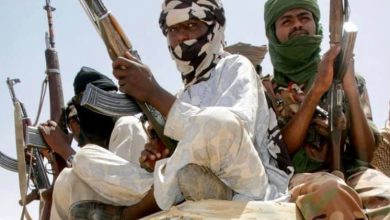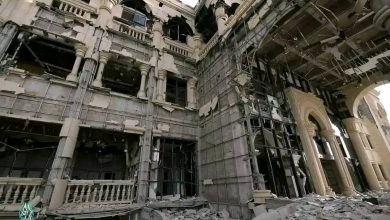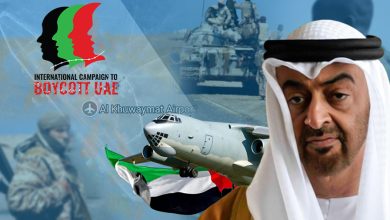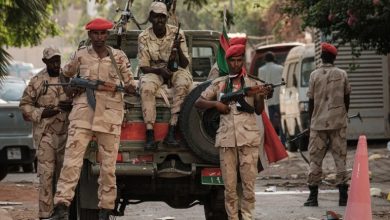Le Monde Highlights UAE’s Aggressive and Secessionist Strategy in Yemen, Libya, and Sudan
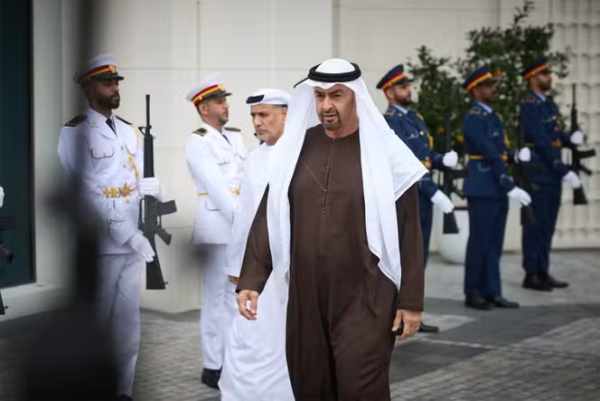
French newspaper Le Monde reported that the foreign policy of the United Arab Emirates—referred to as the “Sparta of the Middle East”—has been characterized for over a decade by a militarized, aggressive, and hardline secessionist approach in Yemen, Libya, and Sudan.
In an analysis by Jean-Pierre Filiu, Professor of Political Science at Sciences Po—translated into Arabic by Al-Mawqe Post—it is stated that for more than ten years, Abu Dhabi has supported secessionist forces in Libya, then in Yemen, and now in Sudan, exacerbating the fragmentation of the Arab world.
Le Monde notes: “The ‘Sparta of the Middle East,’ as the UAE has been dubbed, has pursued an especially aggressive and heavily militarized foreign policy for more than a decade.”
According to the analysis, this strategy bears the clear imprint of Mohammed bin Zayed, the current President of the UAE, and is driven by an obsessive hostility toward the Arab Spring—the wave of popular uprisings that shook the region’s dictatorships in 2011.
The analysis adds, “The strength of this strategy may lie in its counter-revolutionary coherence, but it leads the UAE to support secessionist movements in various theaters, further fragmenting the affected states instead of restoring any form of authoritarian stability.”
Southern Secessionism in Yemen
The analysis notes that, unlike Libya, the UAE intervened in Yemen in March 2015 alongside Saudi Arabia to support the internationally recognized government. The goal was to contain and repel the Iran-aligned Houthi forces, who were close to seizing control of the entire country.
UAE ground forces managed to liberate Aden, which had served as the capital of South Yemen from 1967 to 1990, before unification under Sanaa. Then, Mohammed bin Zayed chose to back southern secessionists over government loyalists, whom he viewed as affiliated with the Muslim Brotherhood. This caused significant tension with Saudi Arabia, but the UAE maintained its approach due to its ground presence.
According to Le Monde, such internal divisions ultimately benefited the Houthis, who consolidated their grip over the rest of the country from Sanaa. Following this setback, the UAE withdrew its forces from Yemen in February 2020 but continued to support separatist militias during their summer 2022 assault on the government camp.
Abu Dhabi has also supported forces loyal to Tareq Saleh, the nephew of former Yemeni dictator Ali Abdullah Saleh—previously allied with the Houthis before being killed in 2017—especially along the Red Sea coast in a purely counter-revolutionary logic.
The report observes that while the UAE and Saudi Arabia may have agreed to seat their respective proxies within a Presidential Leadership Council, it is merely a patchwork of factions incapable of presenting a serious alternative to the Houthis.
UAE and the Division of Libya
On Libya, Le Monde notes that after the 2011 civil war that ousted Colonel Gaddafi, Abu Dhabi threw its support behind General Khalifa Haftar—once the governor of Tobruk under Gaddafi from 1981 to 1986, before defecting to the U.S.
The UAE not only encouraged Haftar to launch a second civil war in May 2014 but also conducted airstrikes on Tripoli just three months later. However, Haftar’s forces failed to capture the capital, resulting in a split between two governments: one in Tripoli recognized by the UN, and another controlled by Haftar in Benghazi.
Despite the UN arms embargo, Haftar continued receiving a steady flow of Emirati weapons, including Belarusian-origin helicopters. The UAE rejected any notion of power-sharing in a united Libya and pushed Haftar to start a third civil war in April 2019. This only drove the Tripoli government into the arms of Turkey and further deepened the East-West divide.
The report adds that Mohammed bin Zayed has since turned Benghazi and its surroundings into a testing ground for military cooperation with Russia—covertly supported by the UAE. This dimension became clearer after the fall of Syria’s Assad regime in December 2024, when Russian assets relocated from Syria’s coast to Haftar’s stronghold. The development of Al-Jufra airbase in southern Libya carries severe implications in this context.
UAE’s Support for Genocidal Militias in Darfur
In Sudan, Le Monde reports that the UAE recruits mercenaries from the Rapid Support Forces (RSF)—militias involved in the Darfur genocide since 2003—to deploy them in Yemen.
General Mohamed Hamdan Dagalo, aka “Hemedti,” the RSF commander, has developed various trafficking operations, particularly in gold, between his western Sudanese stronghold and Dubai’s markets. His ties with Mohammed bin Zayed strengthened following the October 2021 coup in Khartoum by army chief General Abdel Fattah al-Burhan.
This counter-revolutionary alliance fractured in April 2023, when forces loyal to Burhan and Hemedti clashed in Khartoum and across the country.
The report says that while Egypt supports Burhan, and Saudi Arabia tries in vain to mediate, the UAE continues its unconditional support for Hemedti. The UAE is accused, like in Libya, of violating the international arms embargo. Bulgaria recently confirmed supplying thousands of shells to the UAE that were later found with RSF fighters.
The UAE also encouraged Hemedti to announce a rival government to Burhan’s in April last year, effectively threatening Sudan with division. Meanwhile, RSF and allied forces continue committing atrocities in Darfur.
In conclusion, Le Monde states that the Sudanese tragedy reaches a catastrophic peak under the UAE’s secessionist strategy—one that fuels collective suffering and regional disintegration.
